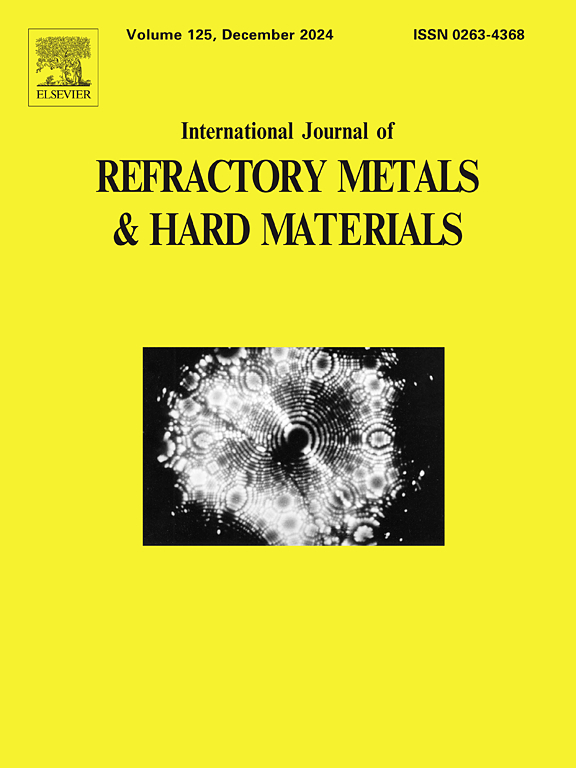Temperature-induced tunable surface roughness in polycrystalline diamond
IF 4.2
2区 材料科学
Q2 MATERIALS SCIENCE, MULTIDISCIPLINARY
International Journal of Refractory Metals & Hard Materials
Pub Date : 2025-01-30
DOI:10.1016/j.ijrmhm.2025.107084
引用次数: 0
Abstract
Polycrystalline diamond (PCD) exhibits ultra-high hardness, fracture toughness and thermal conductivity, which is suitable for service at extreme temperatures. However, the correlation mechanism between temperature and surface roughness in PCD is still unclear, resulting in the inability to obtain atomic-scale surface. Therefore, the surface roughness of PCD at different temperatures was measured using an atomic force microscope, confirming that grain thermal expansion due to temperature has a significant impact on the surface roughness of PCD. Molecular dynamics simulation shows that the coefficient of thermal expansion of PCD decreases with a gradual increase in its average grain size. When the temperature changes, the model with a smaller average grain size exhibits more pronounced expansion compared to the model with a larger average grain size. This expansion inhomogeneity directly contributes to the variation in PCD surface roughness as a function of temperature. Inspired by the above, retaining an appropriate inverse height difference between grains on the surface of PCD based on the mapping relationship between service temperature and surface grain deformation at room temperature. So then, when PCD is raised from room temperature to service temperature, the different grains will be expanded to an approximate height level to obtain an ultra-smooth surface.
求助全文
约1分钟内获得全文
求助全文
来源期刊
CiteScore
7.00
自引率
13.90%
发文量
236
审稿时长
35 days
期刊介绍:
The International Journal of Refractory Metals and Hard Materials (IJRMHM) publishes original research articles concerned with all aspects of refractory metals and hard materials. Refractory metals are defined as metals with melting points higher than 1800 °C. These are tungsten, molybdenum, chromium, tantalum, niobium, hafnium, and rhenium, as well as many compounds and alloys based thereupon. Hard materials that are included in the scope of this journal are defined as materials with hardness values higher than 1000 kg/mm2, primarily intended for applications as manufacturing tools or wear resistant components in mechanical systems. Thus they encompass carbides, nitrides and borides of metals, and related compounds. A special focus of this journal is put on the family of hardmetals, which is also known as cemented tungsten carbide, and cermets which are based on titanium carbide and carbonitrides with or without a metal binder. Ceramics and superhard materials including diamond and cubic boron nitride may also be accepted provided the subject material is presented as hard materials as defined above.

 求助内容:
求助内容: 应助结果提醒方式:
应助结果提醒方式:


